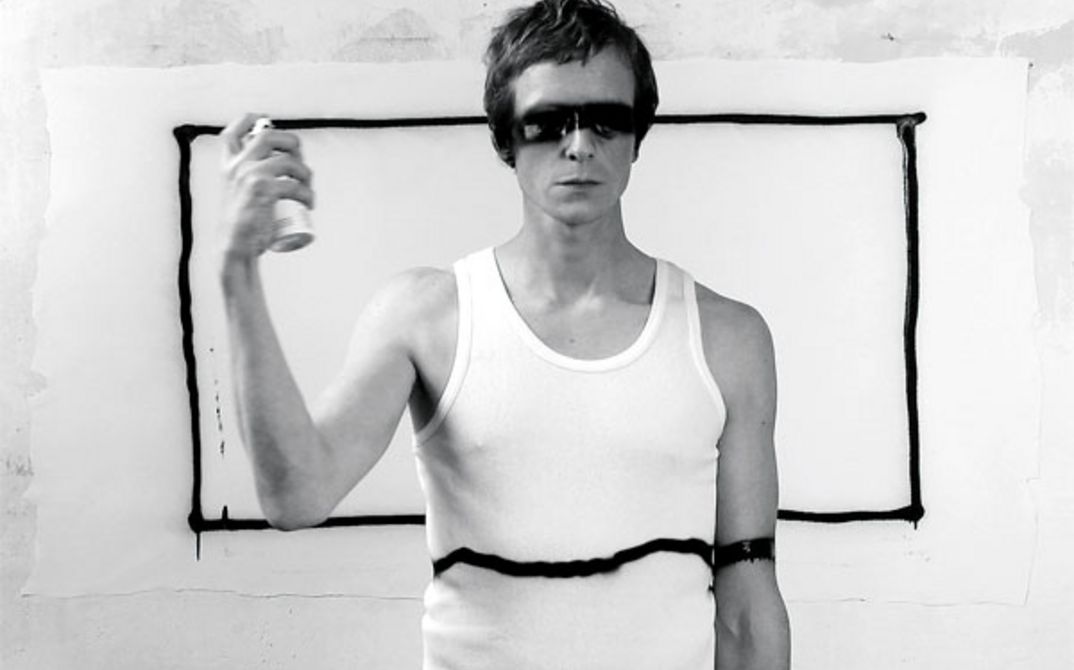13.02. 15:00 Eng. subtitles Arsenal 1
16.02. 20:30 Eng. subtitles Arsenal 2
18.02. 13:30 Eng. subtitles CineStar 8
Düsseldorf, beginning of the seventies. Hans, a young, introverted student of Beuys, meets Ruth, a young homeless woman living in a park. Fascinated by her, he takes Ruth in and makes her the subject of his video work. Ruth quickly settles into the artist scene around Hans, she gets a job as a drawing model at the academy. But Hans is skeptical about her new life, he suspects that Ruth, in her transformation to ‘glamour girl,’ is only trying to get away from herself. For him, she remains the baffling homeless girl that he had secretly fallen in love with, a subject that he doesn’t want to share with anyone. Jealous of his best friend Philipp, he locks Ruth up in his studio so he can – so he thinks – look into her secrets in the test tube of art. Art and life become inextricably intertwined.
In front of the backdrop of the skeptical post ’68 years, The Sleeping Girl presents a portrait of two dissimilar loners who are apparently trying to use each other to get a grip on their damaged lives. Made in the style of a self-reflexive video experiment, but with the dramatic means of narrative cinema, the film brings alive a time in which the first portable video systems were becoming popular among artists and in which a significant period in performance art was shaping up parallel to the rising video culture.
The Sleeping Girl is a fictional artist film. Its documentary style grounds the psychological movement of history, it is the organic component of narration. We experience the events through Hans’s gaze, every image is marked by his artistic vision – it is Hans’s film that we see. the dramatic action takes place at the point of friction between Hans’s intentions and the unpredicted, which enters in without – and often contrary to – his cooperation. So the film has Hans depicting his own loss of control, we participate in a battle over the grandeur of the image, a battle with the reality of the event, the central form of which is Ruth.
But Hans’s artistic program has nothing to do with protocol: he is an active artist, himself the protagonist of his own images. He examines the elementary peculiarities of the medium–film character in space, relation of the visual space to real space–and his own relation as well. Like the Dutch artist Bas Jan Ader, who died very young and is my historical model, Hans creates himself as a melancholy-ironic, Buster-Keaton-type art figure, who encounters the adversities of reality with stoic patience, consequently becoming the pawn of the game. Hans’s film is therefore always also a project of self-examination, in which the difference between artistic figure and the real Hans creates the spark for the dramatic action. (Rainer Kirberg)
Nowadays, determination and mania are taken for granted as constituent parts of the image of the modern artist: his madness, his loneliness in the workshop, that’s all pop. the mythology of the modern artist is so accessible in The Sleeping Girl not only because Joseph Beuys, the most famous German artist of the twentieth century, plays an elegant, small supporting role, but because he has become the basic configuration of the dreams and projections of young people. Christoph Schlingensief and Jonathan Meese can even be seen on prime time TV these days – not their work or their films, but themselves in person, as embodiments of just this mythology. The Sleeping Girl succinctly and intelligently plays with this familiarity and tells an emotional love story in front of this backdrop, one that is timeless and moving. (Stephan Geene)
To tell the story of the thematic and media-formal encounter of the video art, feature film, and charismatic large-scale projects of the visual arts of the seventies as the prehistory of the eighties, and not as the post-history of ’68, is a brilliant idea and of great import not only for German film and its history, but also for the new definition of an art history of the two German states, which is often produced with questionable means. (Diedrich Diederichsen)
Rainer Kirberg, born 1954, studied at the Kunstakademie Düsseldorf. Active as artist, filmmaker, and author in the film and television industry. Four feature films, including the cult film The Last Revenge, made in 1980. Since 1978 his artistic works (film, installations, performance) have been shown in institutions like the Vienna Secession and the Kunst Werke in Berlin. Music videos in the German and international independent music scene, some of which are in the collection of the Cinémathèque Française. Aside from well-known actors such as Tcheky Karyo (Nikita), Erwin Leder (Das Boot), and Peter Lohmeyer, his collaborators include the Dalí music and disco queen Amanda Lear and the underground film legend Kenneth Anger.
Format: HDCAM
Running time: 105 minutes
Screenwriter/director: Rainer Kirberg
Actors: Jakob Diehl, Natalie Krane, Christoph Bach
Art design: Birgit Möller
Sets: Stefanie Lindner
Costumes: Petra Wellenstein
Make-up: Nadja Fröhlich
Lighting: Armin Mobasseri
Sound: Manja Ebert
Editor: Ansgar Wacker
Producers: Rainer Kirberg, Caroline Kirberg, Tøni Schifer, Jonas Knudsen, Stephan Geene.
